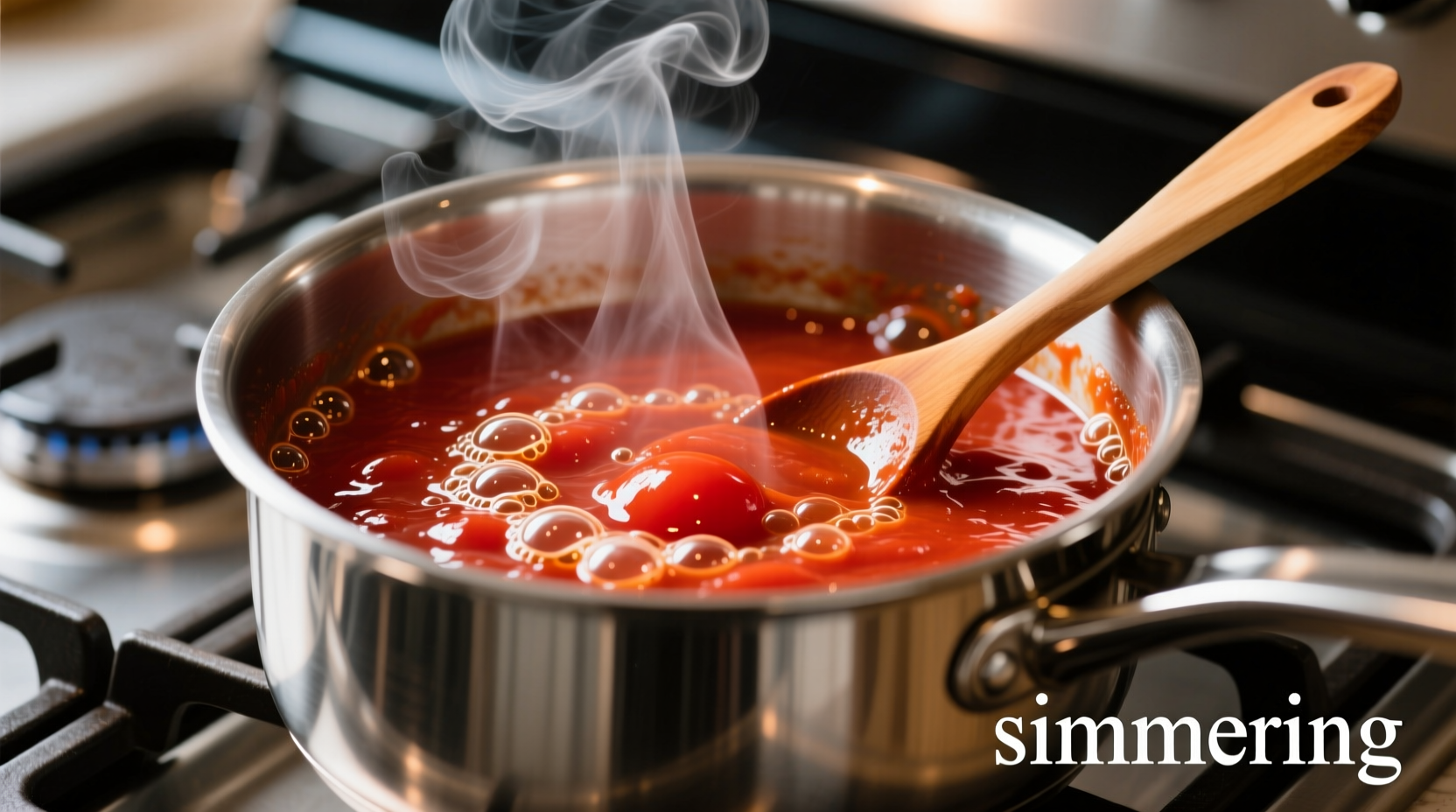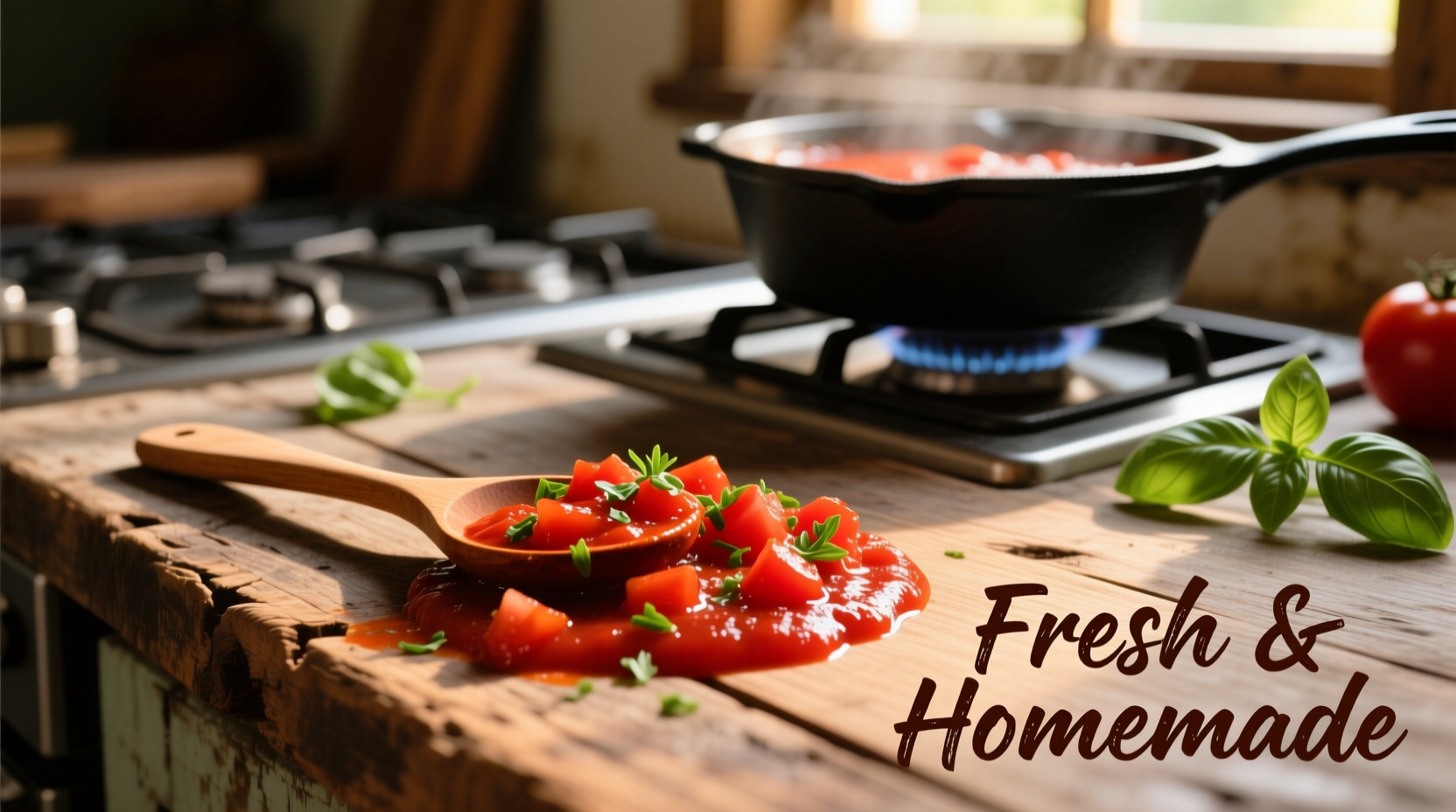Make restaurant-quality homemade fresh tomato sauce in 45 minutes using just 6 simple ingredients—no preservatives, no added sugar, and infinitely customizable to your taste. This authentic recipe yields a rich, balanced sauce with deep umami flavor that surpasses any store-bought alternative.
There's nothing quite like the vibrant taste of homemade fresh tomato sauce simmered from ripe, seasonal tomatoes. Forget the metallic aftertaste and mysterious additives of commercial sauces—when you make your own, you control every element that goes into this kitchen staple. As a chef who's prepared thousands of pasta dishes across professional kitchens, I can tell you the difference between homemade and store-bought isn't just noticeable—it's transformative.
Why Homemade Fresh Tomato Sauce Outperforms Store-Bought
Commercial tomato sauces often contain preservatives, added sugars, and thickeners that compromise both flavor and nutrition. When you make sauce from scratch, you benefit from superior taste, better nutrition, and complete ingredient control. Let's examine the key differences:
| Feature | Homemade Fresh Sauce | Store-Bought Sauce |
|---|---|---|
| Ingredients | 6 simple, recognizable items | 15+ ingredients including additives |
| Sugar Content | Natural fruit sugars only | Added sugars (3-8g per serving) |
| Sodium Level | Adjustable to taste | Fixed high levels (200-400mg/serving) |
| Flavor Complexity | Rich umami depth | One-dimensional taste |
This comparison reflects data from the FDA's nutritional guidelines on processed versus whole food ingredients. The difference in ingredient quality directly impacts both flavor profile and nutritional value.
The Essential Tomato Selection Guide
Not all tomatoes work equally well for sauce. The secret to exceptional homemade fresh tomato sauce starts with choosing the right variety:
- Roma (Plum) tomatoes: Highest flesh-to-juice ratio, ideal for thick sauces
- San Marzano: DOP-certified varieties from Italy offer superior sweetness and lower acidity
- Heirloom varieties: Great for complex flavor profiles but require longer simmering
During peak summer months (July-September), fresh tomatoes provide the best flavor. Off-season, high-quality canned whole tomatoes make an excellent alternative—just avoid pre-seasoned varieties that limit your control over ingredients.
Step-by-Step Sauce Preparation
Follow this professional technique for perfect sauce every time. The key is patience during the simmering phase—rushing this step sacrifices flavor development.
Required Equipment
- Heavy-bottomed stainless steel pot (avoid aluminum which reacts with acid)
- Immersion blender or regular blender
- Wooden spoon
- Sharp chef's knife
Ingredients for 4 Servings
- 2.5 lbs (1.1 kg) ripe tomatoes, cored and quartered
- 3 tbsp extra-virgin olive oil
- 4 garlic cloves, thinly sliced
- 1 small yellow onion, finely diced
- 1 tsp sea salt (adjust to taste)
- 10 fresh basil leaves
Preparation Process
- Sauté aromatics: Heat olive oil over medium-low heat. Add onions and garlic, cooking until translucent (about 8 minutes)—never let garlic brown.
- Add tomatoes: Increase heat to medium-high, add tomatoes with their juices, and bring to a gentle boil.
- Simmer patiently: Reduce heat to low and maintain a gentle simmer for 35-40 minutes, stirring occasionally. The sauce is ready when it coats the back of a spoon.
- Finish with basil: Remove from heat, stir in basil, and blend to desired consistency.

Troubleshooting Common Sauce Problems
Even experienced cooks encounter issues with homemade fresh tomato sauce. Here's how to fix them:
- Too acidic? Add a pinch of baking soda (1/8 tsp at a time) or a small grated carrot during simmering.
- Too thin? Continue simmering uncovered to reduce, or add tomato paste (2 tbsp) to thicken.
- Lacking depth? Sauté onions longer until golden, or add a Parmesan rind during simmering.
- Bitter taste? Remove seeds and gel from tomatoes before cooking—they contain most bitterness.
According to culinary research published by the USDA Agricultural Research Service, the acidity level in tomatoes naturally varies by variety and ripeness, explaining why some batches require adjustment.
Storage and Preservation Guidelines
Proper storage maintains both safety and flavor of your homemade fresh tomato sauce:
- Refrigeration: Store in airtight container for up to 5 days
- Freezing: Portion into ice cube trays, then transfer to freezer bags (keeps 6 months)
- Canning: Requires pressure canning for safety—never water-bath can tomato sauce alone
Follow the National Center for Home Food Preservation guidelines for safe canning practices. Improperly canned tomato products risk botulism contamination.
Delicious Sauce Variations
Once you've mastered the basic recipe, experiment with these chef-approved variations:
- Arrabbiata: Add 1 tsp red pepper flakes with the garlic
- Vodka sauce: Stir in 1/4 cup vodka after tomatoes have reduced by half
- Garden vegetable: Add 1 diced zucchini and bell pepper with the tomatoes
- Roasted garlic: Replace raw garlic with 1 whole roasted garlic bulb
Each variation maintains the core technique while introducing new flavor dimensions. Remember that homemade fresh tomato sauce should enhance your dish, not overpower it—balance is key.











 浙公网安备
33010002000092号
浙公网安备
33010002000092号 浙B2-20120091-4
浙B2-20120091-4